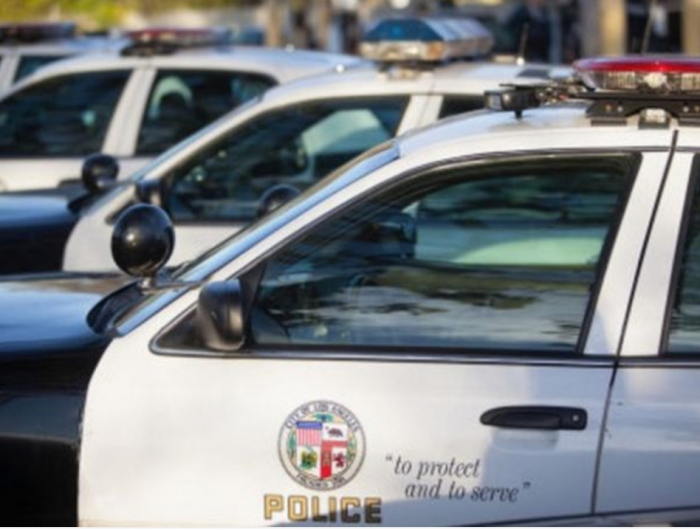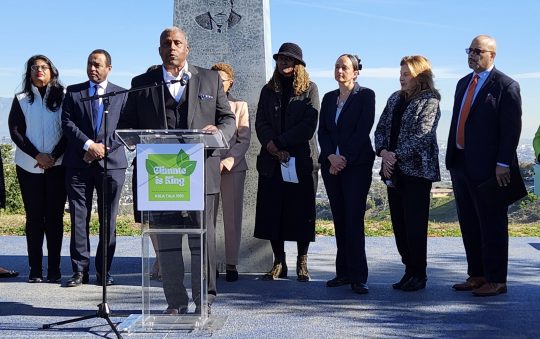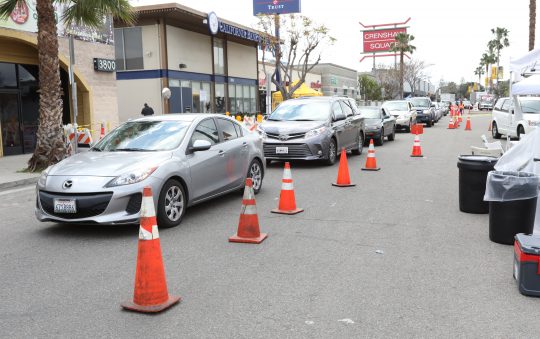The Los Angeles Police Commission voted to continue to explore ways to reduce racial disparities in traffic stops, following a report that examined hundreds of thousands of police actions last year.
The commission also voted to add language to the officers’ field notebooks that requires them to state they are asking for consent to search someone’s vehicle and to clearly state that the driver has the right to refuse. It also outlines when a search can be conducted without someone’s consent during situations perceived as dangerous by officers.
The report by the Los Angeles Police Department’s Office of the Inspector General, published late last month, found “racial disproportions in stops for every type of violation.”
Commissioners described the report as the genesis for creating policies that could reduce the number of stops for minor violations as well as altering the methods of “pretext stops” that are conducted based on suspicions.
“We’ll be rolling out something that talks about the basis for the stop, whether or not there was a search or getting people out of the car and the basis for (those actions),” said Lizabeth Rhodes, LAPD director for the Office of Constitutional Policing and Police, adding that some of the proposed policy changes could be implemented by the start of 2021.
“Again, we’re committed to working with the Office of Operations and the Community Outreach and Development Division,” Rhodes said.
Commissioners said they will have Chief Michel Moore, the Los Angeles Police Protective League (the LAPD’s union) as well as the OIG involved in developing the policies.
“We, the commission, must be better at reviewing and conducting oversight in the use of data and data like this, which is … required by the state law, but (this gives) us an opportunity to really address it,” Commission President Eileen Decker said.
Commissioners said they did have some concerns about the report’s data accuracy and wanted more reports on how new policies could be implemented.
The OIG review noted limitations, such as how the residential demographic data it used for the analysis doesn’t indicate the actual rate at which different racial groups commit crimes or the percentage of crimes that go unobserved by officers.
Rhodes said the LAPD has invested in a system that will analyze and correlate traffic stop data to make it more accessible to all of the LAPD’s 21 divisions.
“We’re not creating a new policy. All we’re doing is setting seats at the table,” Commissioner Steve Soboroff said. “And certainly the chief will be at the table, and he describes it as a roundtable, not as a table with a head. So, I think that this is appropriate. It’s healthy, and it’s very difficult.”
However, the LAPPL put out a statement signed by union president, Craig Lally, on Tuesday that criticized the board’s actions by saying the commission spent the meeting talking about data points instead of the increasing trend of shootings and killings.
The police union said homicides have increased 25% compared to last year, shooting victims have increased 30.5% and shots fired have increased 28.1%. Gang homicides are up 22.6%, gang-related carjacking is up 18.4% and shots into inhabited dwellings is up 41.2%, the union said.
“Year to date there have been 26.2% fewer stops by police officers (416,520 in 2020 vs. 564,393 in 2019),” the LAPPL stated. “There has also been a 19.6% reduction in the number of firearms booked into the property division. Do you think that there could be a correlation between the increase in shootings and killings and the reduced number of police stops and illegal firearm seizures?”
At the end of a digital advertisement from the union that lists those statistics, the LAPPL asked the Police Commission, “What is your plan to keep LA safe?”
The OIG report found people police believed were Black were overrepresented in these interactions across the city, while those they thought were White or Asian were “significantly underrepresented.”
The report focused on officer-initiated stops and also examined video from 190 incidents.
It found traffic stops of Whites (and some other groups) were most likely to be related to how the suspects were driving, while Black and Hispanic people were most likely to be stopped for having expired vehicle registration documents, or some other regulatory or equipment violation.
And it said racial disparities were most clear when it came to police units focused on “crime suppression,” such as those specifically set up to dismantle gangs. Similar to stops occurring in crime-ridden neighborhoods, those units issued citations less frequently.
Also, after being stopped, Black and Hispanic people were more likely to be asked to step out of their vehicle, to be searched or to have a Field Interview Report written about them.
Among the top five types of violations, racial disparities in the rate of post-stop activity persisted even among stops for the same type of violation.
Searches of Black and Hispanic people were less likely to be associated with the recovery of illegal items than searches of White people.
When it came to serious contraband items such as firearms, about two out of every 100 searches turned one up, and this only varied a little by race. Black and Hispanic people were slightly more likely to be associated with the recovery of firearms than searches of other groups, according to the analysis.
The report, put out by Police Commission Inspector General Mark Smith, concluded that some of the racial disparities “were the result of strategies designed to use these violations as a pretext to identify or suppress more serious crimes,” but said they are “on balance, of limited effectiveness in identifying evidence of illegal firearms” or other serious crimes.
“As stated in the OIG report, racial disparities are not easily understood as the two most frequently identified comparisons of stops are inherently imperfect,” the LAPD said in October. “Additionally, while the report identified disparate impacts relative to the number of stops involving people of color, the report did not find disparate treatment of those individuals who were stopped. Officers generally did not know the race of the person prior to the stop and actions did not vary significantly by race.
“We are working closely with our Board of Police Commissioners and the Office of the Inspector General to identify methods to improve the accuracy of stop data, as well as pursue recommendations from the report regarding post stop activities. This department is committed to reduce racial disparities from stops or other actions, whenever possible, while continuing to evaluate the outcomes of various crime reduction strategies, as well as creating additional metrics related to building community engagement and trust,” the statement continued.








